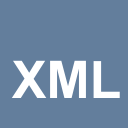Version:3.0
Release:3.0.0
Availability:available
UniData provides two kind of data access:
- open data
(all users can use the data - an expense allowance could be required) - restricted data
(the data use is limited - see below)
Data Kind:
individual data
Time Dimensions:
longitudinal (trend repeated cross-section)
Series Name:
EB - Eurobarometer
other documentation
The Eurobarometer survey is designed to provide regular monitoring of public social and political attitudes in the EU through specific trend questions. Therefore, the general aim of EB is to know the attitudes and evaluations of European citizens about large general themes. The questions concern to the European integration issues, but sometimes they regard also specific problem about single country or common problems of economic, political or social nature.
The arguments of Eurobarometer 87.2 are as follows:
- Designing Europe’s Future: European Union Budget appraisal and preferences, trust in institutions, perception of and attitudes towards the EU and European Unification, preferences for the future of the EU, globalisation
- Use of electronic devices: mobile phones (with access to the telephone network and mobile phone contracts giving access to internet), television access and TV reception channels, frequency and use of devices (phone calls over a landline phone or mobile phone, SMS, instant messaging, calls via internet applications, e-mail, online social media)
- Service packages: types of subscriptions, main considered factors in the choice of services, change of service provider and any experienced problems, quality of and experiences with internet access
- International communication knowledge and behaviour: international phone calls (landline, mobile, VoIP), international SMS and use of instant messaging services within the EU, awareness and use of special tariffs for international calls, flat rates included in the subscription, international emergency phone numbers
- Demography: political position, household composition, employment, internet use, current financial status, life satisfaction, frequency of political discussions, European Union’s perception
Data are available for free (registration required). After logging in, please click on the green button ![]() in the box at the right.
in the box at the right.
Keywords: media, phone, internet
Topic Classification:
Nations: Austria, Belgium, Bulgaria, Croatia, Cyprus, Czech Republic, Denmark, Estonia, Finland, France, Germany, Great Britain, Greece, Hungary, Ireland, Italy, Latvia, Lithuania, Luxembourg, Malta, Netherlands, Northern Ireland, Poland, Portugal, Romania, Slovakia, Slovenia, Spain, Sweden
Geographical Unit: size community
Analysis Unit: individual
Universe: Residents in the respective country aged 15 and over
Sample Procedure: About 1,000 individuals for each country. Multi-stage stratified random sample
Weight: Weight used. Please read the documentation for any details
Collection Mode: face to face interview, Computer-Assisted Personal Interviewing (CAPI)
Collection Size: UniData supplies: 1 dataset in SPSS format; 1 dataset in Stata format; 1 syntax file concerning missing value in SPSS format; 2 questionnaires in PDF format (ita, eng); 1 methodological notes and codebook file in PDF format (eng) (6 file)
Documentation:
| Methodological Notes and codebook (pdf): | |
| DDI Documentation: |
Data Use Restriction:
UniData – official representative for the dissemination of Eurobarometer surveys in Italy – provides a free data access for all Italian residents upon registration. Data are released in according to GESIS Licence (Category 0), available at this link. Other users will need to contact the GESIS Data Archive.
Source Contact: Eurobarometer Data Service - GESIS
Citation:
European Commission. (2017) Eurobarometer 87.2: E-Communications and Digital Single Market. TNS Opinion & Social [Producer]. GESIS - Leibniz Institute for the Social Sciences [Producer]. UniData - Bicocca Data Archive, Milan. Study Number SI367. Data file version 3.0
Deposit Requirement:
The user is obliged to quote all data and documents disseminated by UniData and used in the own publications, using the information previously showed. The user is also obliged to send UniData the bibliographic citations related to the publications where the requested data and documents are used.
Disclaimer:
Neither the depositor nor UniData bear any responsibility for the analysis or interpretation of the data produced by the user.
Question module QA ‘Designing Europe’s future’ is largely based on Standard Eurobarometer waves 86.2, 84.3, 83.3, 79.3, and 77.3.
Question module QB ‘E-Communications and Digital Single Market’ is partly based on questions asked in the context of the corresponding module surveyed in the framework of Eurobarometer 84.2. For parts of the e-communications questions, the respondents are asked to answer for their household. Alternative weighting variables are suited for the descriptive analysis of the corresponding variables on household level (w31 to w79 and wex_hh).
Starting with Eurobarometer 81.3 (with 84.1 for Germany), the category scheme for country specific protocol variables P6 (SIZE OF COMMUNITY) has changed considerably. Categories for all countries have been harmonized among each other to three values (Rural area – Towns and suburbs/small urban area – Cities/large urban areas).
Starting with Eurobarometer 81.3 the category scheme for country specific protocol variables P7 (REGION) has changed for some countries, in particular introducing NUTS categories for Ireland, Estonia, and Croatia.
Please note that gen1 to gen6 are based on age instead of year of birth, which may entail a slightly inaccurate categorization for some respondents. Moreover, additional discrepancy in the categorization might be due to the potential use of years other than the survey year.
Derived variable d43_qb1 has been modified in dataset version v3-0-0 to make consistent with the official tabular report. Respondents who answer DK (code 11) in source variable qb1_1 have been recoded to ‘9’ (Inap. (11 in qb1_1)) in d43_qb1. Furthermore, there are slight implausibilities in the combined answer categories when comparing with the source variables d43a, d43b, and qb1_1. This might be due to the mix of personal and household related questions.
Derived variable qb5t_1 has been modified and corrected by GESIS. Cases coded ’98’ (‘Other combination or unknown combination (1 in qb5_2 to qb5_8 only once and 1 in qb5_9) ‘) and ’99’ (‘No bundle mentioned (1 in qb5_1)’) have been constructed in accordance with input variables qb5_1 to qb5_10. Categories 1 and 4 to 9 have been corrected in accordance with input variables qb5_1 to qb5_10 and are consistent with official results.
Derived variable qb12t_4 has been modified and corrected by GESIS in accordance with input variables qb12_1 to qb12_4 and information in the official Excel volume: Respondents coded DK throughout variables qb12_1 to qb12_4 have been coded to ‘0’ (Not mentioned) in qb12t_4. Please note: In contrast to the supplied dataset, the official Excel volumes disregard certain cases with no other (landline or personal mobile) phone in d43a/b (coded 99 in qb12_1 or qb12_2) in qb12t_4.
Derived variable qb12tt_4 has also been modified by GESIS, now corresponding with the Excel volume: Respondents coded DK in variables qb12_5 and qb12_6 have been coded to ‘0’ (Not mentioned) in qb12tt_4.
Derived variable qb12t3_4 has been modified and corrected by GESIS in accordance with input variables qb12_1 to qb12_6 and information in the official Excel volume: Respondents coded DK throughout variables qb12_1 to qb12_6 have been coded to ‘0’ (Not mentioned) in qb12t3_4. Please note: In line with the official Excel volume, the previous version of this variable (up to v2-0-0) disregards certain cases with no other (landline or personal mobile) phone in d43a/b (coded 99 in qb12_1 or qb12_2) in qb12t_4. This was adjusted by GESIS in version v3-0-0 in order to establish conformity with qb12t_4.
Derived variables qb14t_1 and qb14t_2 differ slightly in categories 4 and 5 from the official tabular reports. Cases coded DK in filter variables qb12_1 resp. qb12_2 are included in category 4 in the dataset at hand, whereas in the Excel volumes these cases are assigned to category 5. Please consult the detailed value labels of the categories for further information.
Variable split was derived by GESIS on the basis of qa10_4 and qa10_5.
Module QA is available starting with version v2-0-0 (embargo update).
The end-of-fieldwork dates implied by the values in protocol variable p1 (date of interview) differ slightly from those indicated in the technical specifications provided by TNS for some countries.
No data are available for protocol items p8 (postal code), p9 (sample point number), p10 (interviewer number) and p11.









